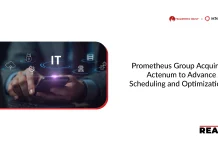The X-ray Laboratory of Rigaku Corporation, a Rigaku Holdings Group company and a global solution partner for X-ray analysis, has developed the Total X-ray Scattering and RMC Modeling Method. TXS-RMC is a powerful technology that clarifies the atomic-scale 3D structure of amorphous carbon1.
TXS-RMC facilitates deeper understanding of the structure and function of not only amorphous materials but also crystalline materials. It is also expected to contribute to improved performance in battery devices and accelerating the development of advanced functional materials for the transmission of gases, fluids and electricity.
1: “Amorphous” is defined as, of a material, possessing an irregular arrangement of atoms or molecules, rather than a regular arrangement as in the case of a crystal.
Also Read: Eric Giesing Joins Savillex as Chief Executive Officer
Previously, the atomic-scale structure of amorphous materials could only be handled qualitatively, or predicted/estimated using molecular dynamics (MD). Use of the 3D structural visualization technology of TXS-RMC enables accurate information to be obtained. Expected applications include advancement of understanding of physical properties and prediction of features in connection with the atomic-scale structures.
TXS-RMC is a technology that responds to strong demand in the development of advanced functional materials for ways of determining whether a given material possesses intended structure, properties or characteristics. Another major breakthrough with TXS-RMC is its broadening of the range of materials to which X-ray analysis of atomic-scale structure can be applied, encompassing not only crystals but also amorphous materials.
Rigaku’s X-ray Laboratory is the only privately operated laboratory in Japan dedicated to X-ray research. About 70 specialists in X-ray technology conduct research at the X-ray Laboratory, working not only on applications to products but also for the general advancement of science and technology for humanity.
SOURCE: Businesswire




